Opulence and Splendour: Fabric in the Italian High Renaissance
“Dress was employed by the Renaissance elite to manifest rank and magnificence.” William J Connell, contemporary historian.
In High Renaissance Italian art, virtuoso paintings convey an extravagant world of thick piled velvet, metallic embroidery and glossy, stiffened silks. This fabric allowed artists to tell wondrous, exotic stories, whipping and swirling in the wind, circling and puffing up bodies, or floating outwards through the clouds towards heaven. But more than just a narrative device, the most richly textured or adorned fabric became a potent, heady symbol of status, reserved for the most divinely spiritual, powerful or wealthy figures. Lending them a regal, opulent splendour, fabric lifted them from ordinary life into the awe-inspiring, ethereal realms of another world.
Textiles were big business in High Renaissance Italy. By the 15th and 16th century, the Italian textile industry had taken off, producing vast quantities of luxurious fabrics including silks, velvets and damasks. Many were woven into with precious metals including silver and gold, adorning fabrics with complex, intricate Moorish designs. Others were dyed in intense, deep colours with plant, mineral or insect-based dyes, sometimes in bold, repeat patterns. These exquisitely made fabrics were then sold in markets throughout Europe.
Wealthy merchants funded the industry, while some even ran their own textile mills, producing bespoke designs with the family crest woven in. The Italian, Catholic church was one such patron, who commissioned the production of the most luxurious and expensive fabrics, realising the theatrical wonder it could bring to their sacred spaces.
Artists rushed to catch up with these developments, conveying dazzling levels of realism with richly varied textures, surfaces and patterns. In paintings of the time, fabrics absorb or reflect the light, falling into crinkles, creases and folds, draping, wrapping, or entirely consuming Biblical, mythological and real characters. Venetian painter Giovanni Bellini led the way, capturing the natural fall of light across a wide array of fabric types. In his Madonna and Child, from the late 1480s, the complex creasing of soft navy, red and white fabric is painted with striking realism, forming pockets and folds that shimmer in and out of the light. His Doge Leonardo Loredan, 1501, captures the Doge of Venice in his formal attire, as satin fabric embroidered with rich gold thread glistens like light on water. Simple pleats suggest the dense weight of his clothing as it falls heavily onto his shoulders, a symbol of the weight and responsibility he must carry with him.
As influenced by Bellini, Venetian painter Lorenzo Lotto continued to convey the rich surfaces of fabric worn by significant figures from Biblical literature. Characterised by deeply saturated colours and strong tonal contrast, his paintings capture with astonishing detail the lavish surface texture of different fabric types. Madonna and Child with Saint Jerome and Saint Nicholas of Tolentino, 1523-4, accentuates Mary’s sleeve with heightened volume and colour, allowing it to ripple and crease in the light like a fleshy form with a life of its own. Over her legs, blue fabric simmers lightly with a satin sheen, falling into soft rivulets and creases. In Portrait of a Woman Inspired by Lucretia, 1530-2, the fabric surface is even more lifelike, as thick, warmly toned velvet forms huge, dramatic puffs, billowing out and lending his central character an opulent grandeur.
Titian’s depiction of fabric is softer and fleshier, becoming almost one with the bodies it envelops. Bacchus and Ariadne, 1520-3, explores the theatrical sensuality of moving fabric, as vivid shades of orange, pink and blue swarm with flickering life, flowing around figures and lifting off into the air around them. This effect of foreshortened space through windswept fabric is exemplified in Perseus and Andromeda, 1554-56, as Perseus is swept across the air into the sea in a bid to save Andromeda. By contrast, in Bronzino’s fabulously decadent portrait of Eleanor di Toledo, 1545, the physical grandeur of fabric becomes the main subject of the painting. His wealthy, influential sitter, wife of Cosimo I de Medici, the Grand Duke of Tuscany, wears a softly textured, velvet dress made from the popular Renaissance pomegranate print, covered with richly adorned brocade patterning in black and gold. Such is the physical presence of her mesmerising dress that it consumes and eclipses her entire body, taking on a dazzling, atmospheric aura that is all its own.





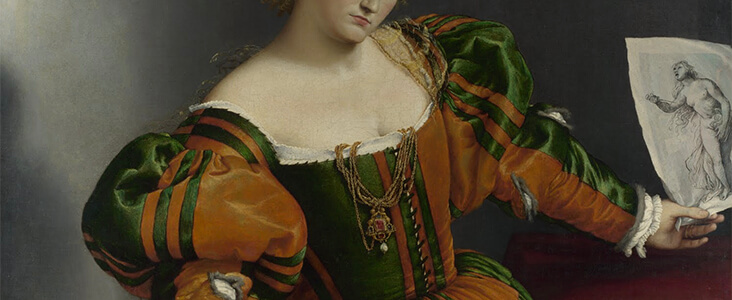
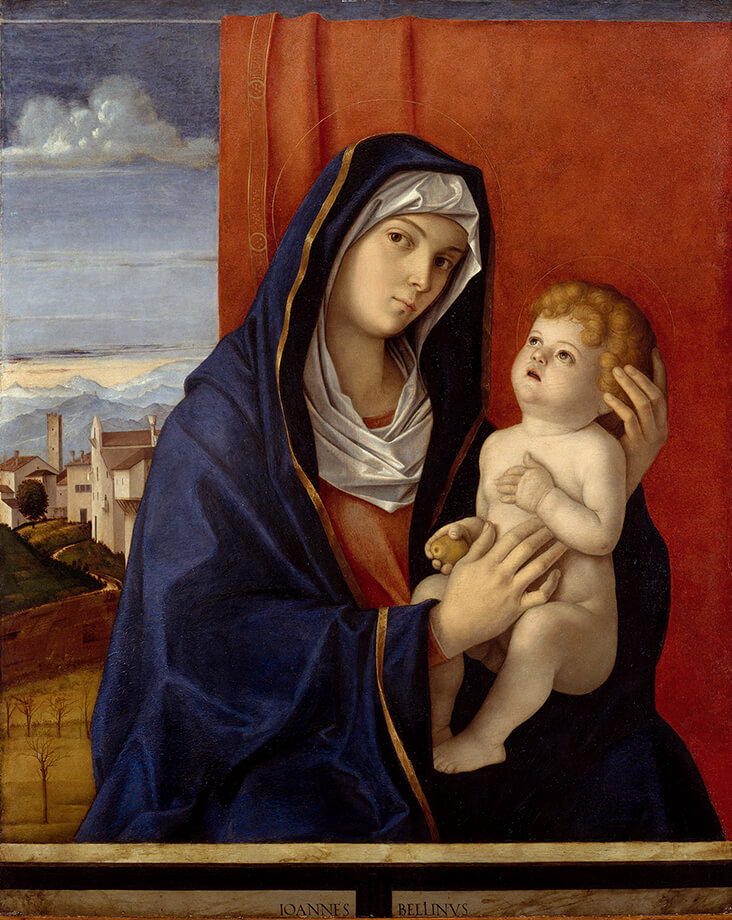
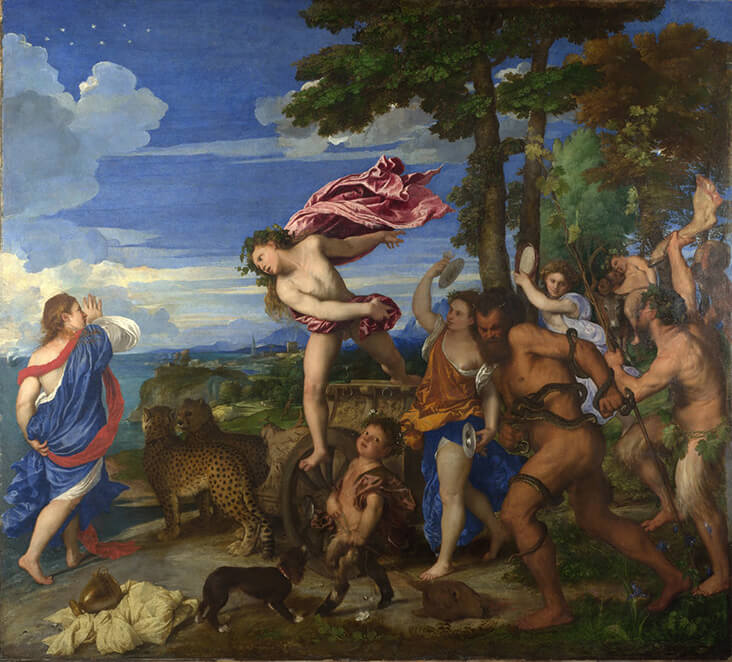
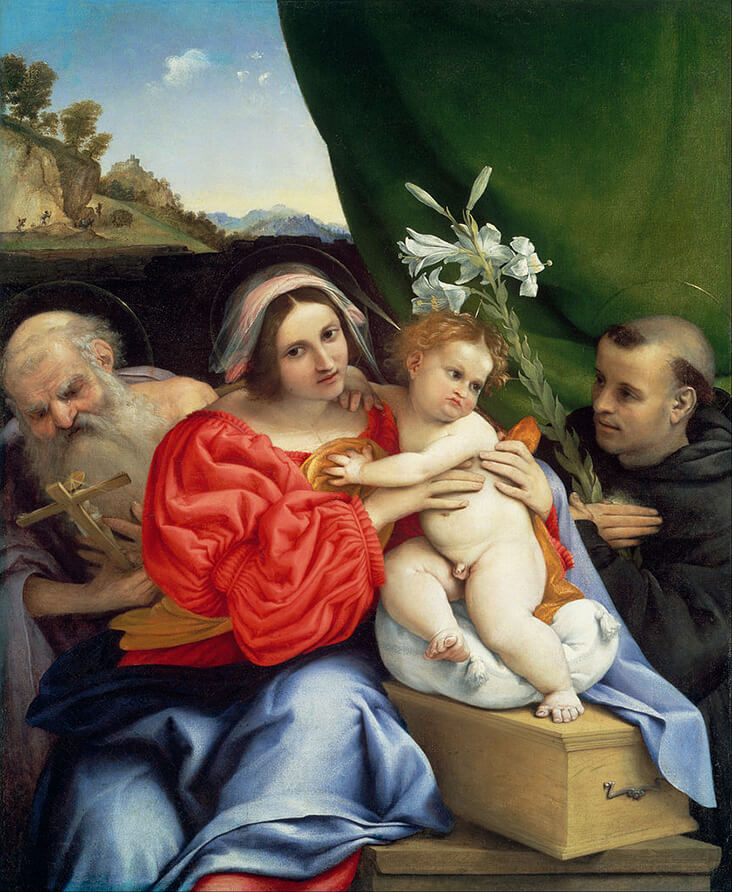
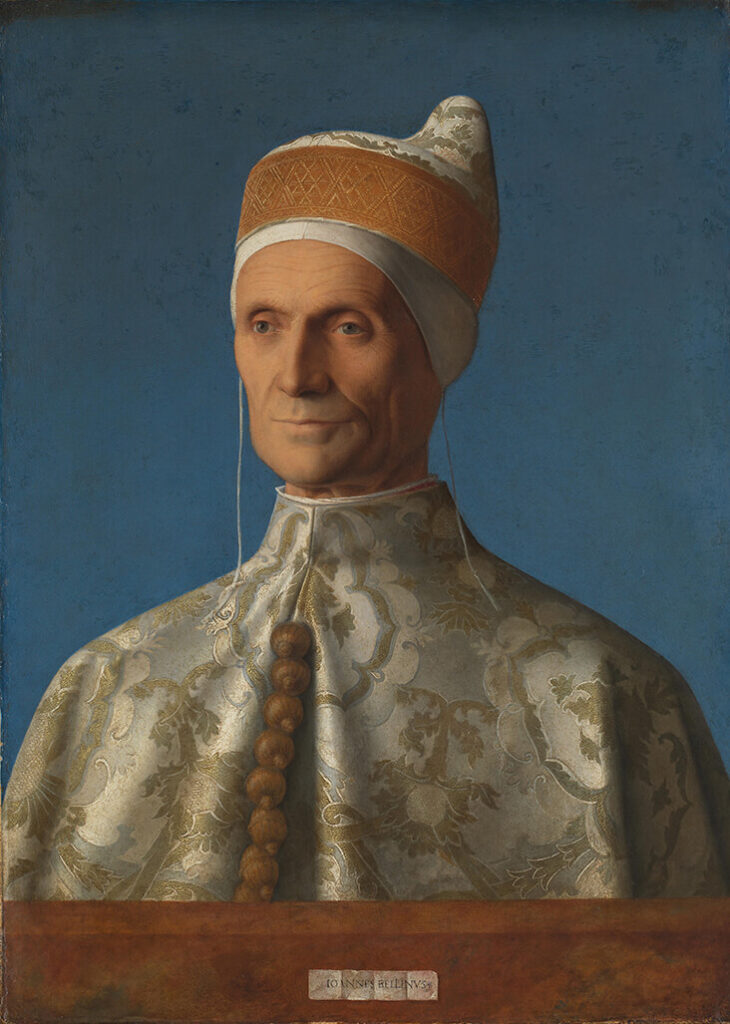
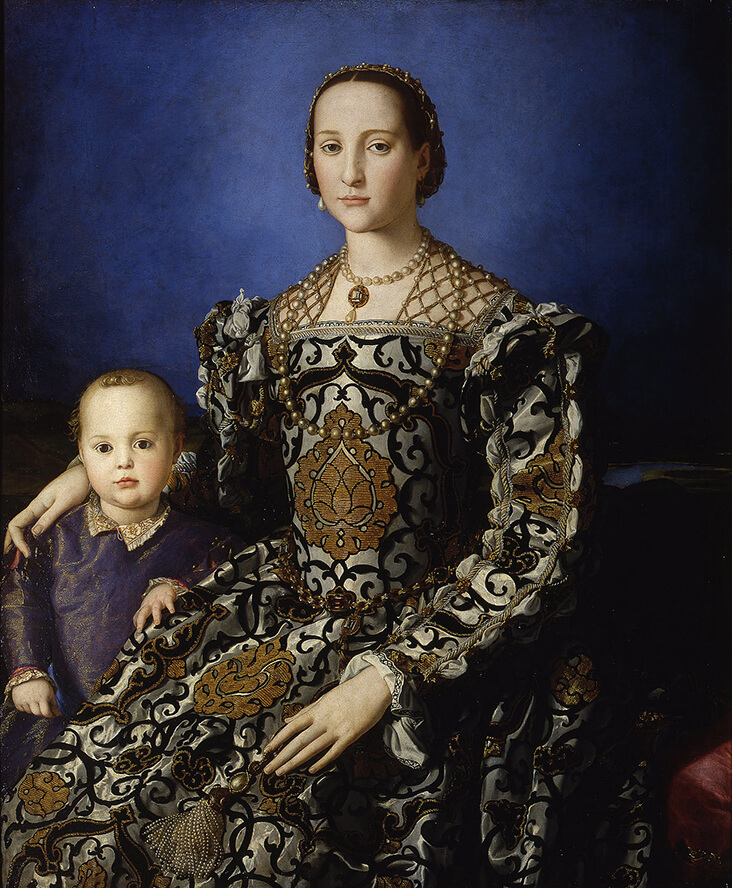











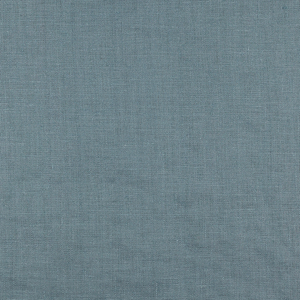





















4 Comments
Sherry Greene-starr
Whenever I see a new piece written by Rosie Lesso, I stop whatever I am doing to read it. I am entranced by her descriptions of fabrics and how they play a part in life and art through history. Please keep publishing her writing- it is exquisite!
Corinne Skulmoski
Hear! Hear! I couldn’t agree more. The description of the paintings is as fascinating as the paintings themselves. Who knew that all this storytelling was going on in the folds of a robe! Rosie’s work is brilliant, don’t stop! Even my sister who cannot thread a needle is completely absorbed in these articles. I send all of them to her. Merry Christmas Rosie!
Rosie Lesso
Thank you so much and so glad to hear you enjoy reading and sharing the articles – Merry Christmas to you too!
Rosie Lesso
Thank you so much for the kind words! It is very encouraging…